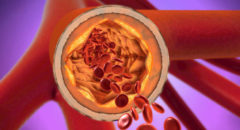
February is American Heart Month! This month’s health awareness is a good reminder to focus on your heart health. Heart disease is the leading cause of death for both men and women in the United States, however, there are steps you can take to reduce your risk. Keep reading to learn how you can keep heart disease at bay.
1. Get Enough Sleep
Sleep is essential for your health. During sleep your mind and body recharge, repair, and recover. According to the CDC, adults who sleep less than 7 hours each night are more likely to have health problems, including heart disease. Sleep deprivation leads to higher stress hormones such as cortisol and inflammatory markers which are associated with cardiovascular disease. To reduce your risk, getting 7 to 8 hours of sleep should be a priority.
2. Reduce Your Stress Levels
When you are stressed your body releases the hormone adrenaline which causes your heart rate to increase, your breathing to become more rapid and shallow, and your






